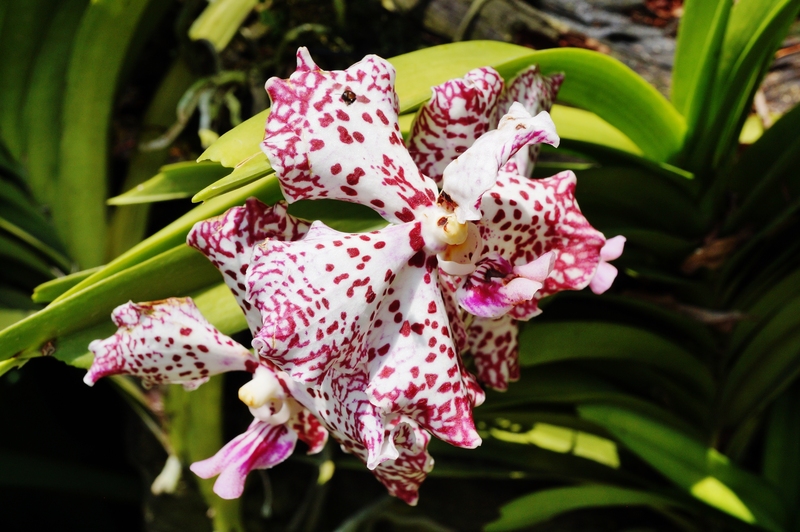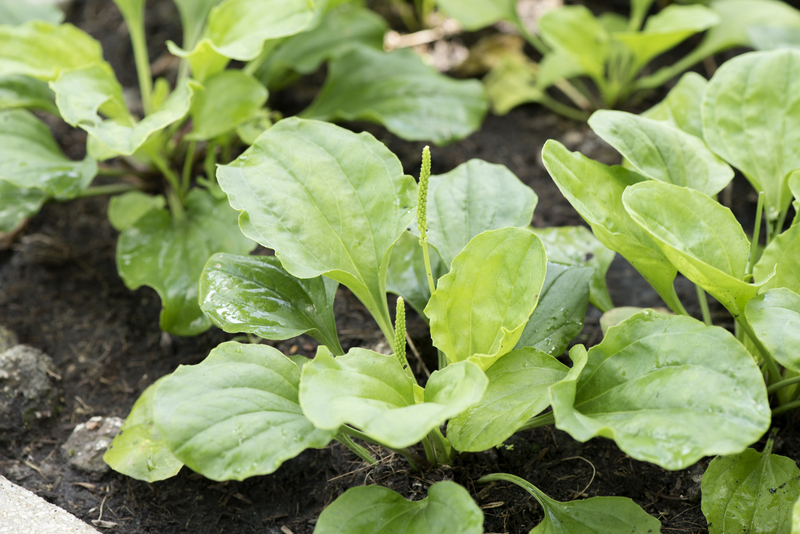Master the Art of Safeguarding Plants During Winter Months
Posted on 25/05/2025
Master the Art of Safeguarding Plants During Winter Months
When cold winds start blowing and the mercury drops, plants face a real challenge to survive and thrive. Whether you are an experienced gardener or a plant enthusiast, knowing how to protect plants from winter is essential for healthy and flourishing greenery year-round. In this comprehensive guide, we unveil proven methods and expert tips to help you master the art of safeguarding plants during winter months, ensuring your garden and indoor plants survive even the harshest cold.
Why Winter Protection for Plants Matters
Winter brings about a host of challenges -- from freezing temperatures to icy winds, frost, and snow. Many plants enter dormancy, while others may suffer from freeze damage, dehydration, or root rot. Winter plant protection shields your cherished greens from potential harm, increases their resilience, and sets the stage for a glorious spring revival.
Understanding the Risks: How Winter Impacts Your Plants
- Frost Damage: Ice crystals can rupture plant cells, causing wilting and blackened leaves.
- Soil Freezing: Roots may be damaged or killed if soil temperatures drop too low.
- Desiccation: Cold winds and dry air pull moisture from leaves, leading to dehydration.
- Fluctuating Temperatures: Sudden thaws and refreezes stress plant tissues.
- Heavy Snowfall: Accumulated snow can break stems or crush branch structures.
Grasping these risks highlights why proactive steps are vital when you protect plants during the winter season.

Preparing Your Garden for Winter
Preparation is the key to winterproofing your plants. Begin your efforts well before the first frost:
- Inspect plants: Remove dead or diseased foliage. Healthy plants handle stress far better.
- Stop fertilizing: Lay off the fertilizer by late summer to prevent new, tender growth that's vulnerable to cold.
- Reduce watering: Water deeply but less often to avoid waterlogged roots, which are prone to rot during winter.
Soil Management: The Hidden Secret
The health of your soil can make or break your winter protection strategy:
- Mulching: Apply 2-4 inches of organic mulch such as straw, bark chips, or shredded leaves. Mulch acts as a natural insulator, moderating soil temperatures and locking in moisture.
- Compost: Top-dress beds with compost. This not only nourishes plants but also helps soil retain warmth.
- Drainage: Ensure proper drainage to prevent root rot. Raised beds or amended soil can make all the difference.
How to Protect Outdoor Plants from Winter Damage
Exposed outdoor plants require creative approaches and specific strategies. Here's how to shield your outdoor garden from winter's worst:
1. Cloaking and Covering: The Power of Physical Barriers
- Frost Cloths: Lightweight, breathable fabrics such as horticultural fleece, row covers, or old sheets prevent frost buildup without suffocating plants. Drape them loosely, securing with stones or stakes.
- Plastic Domes & Cloches: Use plastic cloches or overturned jars for individual tender plants, creating a miniature greenhouse effect.
- Burlap Wraps: Protect large shrubs or evergreens by wrapping in burlap. Support with a frame to prevent direct contact, which may cause fungal issues.
- Windbreaks: Erect temporary barriers made of wood, snow fencing, or bundled straw mats to act as windshields.
2. Mulching for Insulation
Generously mulch garden beds and around root zones to insulate against temperature swings. Use materials like:
- Pine needles
- Chopped leaves
- Straw or hay
*Take care to keep mulch a few inches away from plant stems to prevent rot.*
3. Watering: The Right Balance
- Water before hard frosts: Moist soil retains heat better than dry. Water plants before a freeze to help insulate roots.
- Avoid waterlogging: Standby during rain or snowmelt periods--well-draining soil is essential!
4. Relocating Delicate Plants
If possible, move potted or susceptible plants into a garage, greenhouse, or enclosed porch for the coldest spells. Grouped together, plants create a microclimate that boosts survival.
Indoor Plant Care During Winter
The battle isn't just outdoors! Houseplants need special winter care, as dry indoor air, drafts, and reduced sunlight stress them.
1. Optimize Light and Placement
- Place near bright windows: South or west-facing windows give the most light during short days.
- Rotate regularly: Turn plants every few days to promote even growth and prevent leaning.
- Supplement lighting: Add grow lights or LED plant lights for low-light corners.
2. Manage Humidity and Temperature
- Increase humidity: Group plants, run a humidifier, or set pots on trays of pebbles and water (avoid direct contact with water).
- Avoid drafts: Keep plants away from frequently opened doors, leaky windows, and direct heat sources.
- Maintain steady temperatures: Ideal indoor range is 60?F-75?F (15?C-24?C).
3. Water Wisely
- Less is more in winter: Plants use less moisture during dormancy. Allow the top inch of soil to dry out before rewatering.
- Watch for root rot: Remove saucers or dump excess water after watering.
Safeguarding Perennials, Shrubs, and Trees
Perennial flowers, fruit trees, and woody shrubs need thoughtful attention to withstand winter's trials.
1. Preparing Perennials for Dormancy
- Cut back in late fall: Remove dead stems and foliage to limit overwintering pests and diseases.
- Apply mulch: Insulate crowns with a thick mulch layer--but wait until after the first hard frost to avoid rot.
2. Caring for Shrubs and Evergreens
- Burlap wrapping: Shield against desiccating winds and salt spray.
- Water deeply before ground freezes: Proper hydration strengthens tissues and reduces winter burn.
3. Young Tree Protection
- Wrap trunks with tree guards or white plastic spirals: Prevent frost cracks and rodent damage.
- Stake if necessary: Support tall saplings against heavy snow or wind.
Overwintering Tender and Tropical Plants
Tender perennials and tropicals require extra care to survive cold snaps. Examples include cannas, dahlias, bananas, citrus, and succulents.
- Dig up and store tubers: After the first frost, clean and dry bulbs or tubers, and store in a cool, dry, frost-free place.
- Bring indoors: Pot up or relocate container plants before night temperatures consistently dip below 50?F (10?C).
- Check for pests: Treat for hidden insects before moving plants indoors.
Expert Tips for Frost-Resistant Gardens
Apply these leading horticultural strategies to create a winter-hardy oasis:
- Choose cold-hardy varieties: Select native, frost-resistant, and well-adapted species for your zone. Consult your region's USDA Hardiness Zone chart.
- Plan for microclimates: Place tender plants near walls, fences, or patios where warmth radiates overnight.
- Use raised beds and containers: Improve drainage and temperature regulation.
- Apply antidesiccant sprays: These products help reduce water loss in broadleaf evergreens.
- Be vigilant about snow and ice: Shake heavy snow off branches gently to prevent breakages.
Common Winter Plant Protection Mistakes to Avoid
- Covering too early: Wait until plants are dormant before mulching or wrapping; premature insulation can trap moisture and cause rot.
- Neglecting young plants: Seedlings and young perennials are often most vulnerable--give them extra protection.
- Leaving pots on cold surfaces: Raise containers off stone or cement to prevent cold damage to roots.
- Overwatering: Dormant plants need minimal water; excess moisture encourages disease during winter.
- Ignoring microclimates: Failing to utilize naturally warmer spots means missing out on effective passive protection.

Spring Revival: Assessing and Reviving Winter-Weary Plants
As winter recedes, it's time to transition your frost-protected plants back into active growth:
- Gradually remove protective covers and mulch to avoid shock from sudden temperature swings.
- Prune out damaged or dead growth in early spring to stimulate healthy regrowth.
- Feed and water as plant activity resumes.
- Monitor for pests and diseases--weak plants are more susceptible after winter.
Conclusion: Creating a Winter-Ready Garden
_Safeguarding plants during winter months is both a science and an art, requiring careful observation and a proactive approach._ By understanding the specific needs of your garden, adapting tried-and-true methods, and selecting winter-hardy plants, you can create an oasis that remains healthy and attractive--even in the depths of winter. Get a head start on spring by mastering these essential steps, and enjoy a thriving landscape all year long.
Remember: A little preparation now can make a world of difference in the resilience, beauty, and productivity of your beloved plants. Make this winter the year you truly master the art of plant protection!

